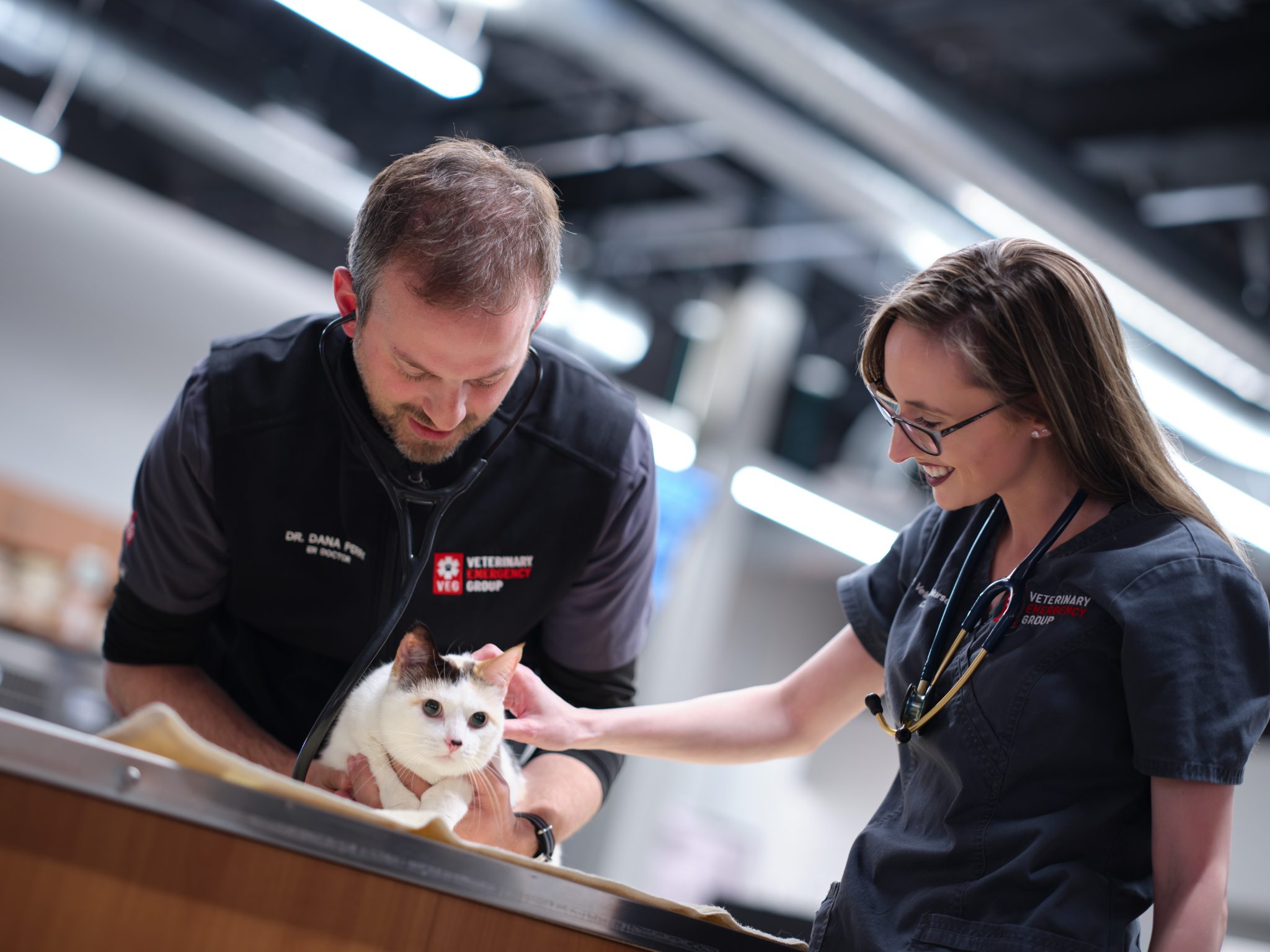
Cat Hypothermia: Why This is an Emergency Situation for Pets
Dr. Erin Sole
Call & Speak with a doctor Open 24/7, Even Holidays!
Walk in today for:
Emergencies
Point-of-Care Ultrasound
Urgent Care
X-Rays
Diagnostics + Testing
End-of-Life Care
Surgery
Treatment + Hospitalization
You know, cats might have nine lives, but that doesn’t mean they’re immune to health problems. Today, we’re diving into a chilly topic that’s more serious than most people realize: cat hypothermia.
What is Cat Hypothermia?
Hypothermia in cats is not just your feline friend feeling a little chilly. It’s a real, potentially life-threatening condition where a cat’s body temperature drops dangerously low. Normally, cats have a body temperature of around 100.5 to 102.5 ºF. In hypothermia, we’re talking about temperatures dropping below 100 degrees. So, how does this happen?
To put it simply, hypothermia occurs when a cat loses heat faster than they can produce it. Cold weather is an obvious culprit, but it’s not the only one. Wet fur from rain or a dip in a puddle can also affect your cat’s body heat, leading to hypothermia. Additionally, underlying illnesses, certain medications, and injuries can make a cat’s body more susceptible to hypothermia without significant environmental temperature changes. This is critical information: it’s not just outdoor cats at risk; indoor cats can suffer from hypothermia too.
The Signs of Cat Hypothermia You Need to Know
Cat owners: take note of your perfect pet’s behaviors. Knowing the symptoms of hypothermia in cats can be the difference between a close call and a tragedy.
- Shivering: Shaking uncontrollably is often the first sign.
- Lethargy: Cats with hypothermia may appear listless or unresponsive.
- Weakness: If your cat is struggling to move or stand, it’s a red flag.
- Pale Gums: Check your cat’s gums. If they are pale or blue, it’s an emergency.
- Cold to the Touch: Feel your cat’s ears and paws. Are they ice-cold? Don’t ignore it; it’s time to see the emergency vet.
These symptoms are not just signs of hypothermia; they could be indicative of many different disease processes. Regardless, they all mean your feline friend should be seen by a veterinarian sooner rather than later.
Avoid a Catastrophe: Seek Immediate Veterinary Attention
You’ve spotted the warning signs… what’s next? We can’t stress this enough: Time is of the essence. Hypothermia can lead to all sorts of complications, from frostbite to even more severe conditions like organ failure. If you suspect your cat may be suffering from hypothermia, call your nearest Veterinary Emergency Group (VEG) location!
What If Cat Hypothermia Goes Untreated?
Untreated hypothermia will lead your cat down a slippery slope. We’re talking about metabolic imbalances and, in the worst-case scenario, death. That’s why if you suspect your cat has hypothermia, call VEG or your nearest emergency vet right away.
Our team of skilled professionals is available 24/7 to ensure your cat receives the best care possible. Don’t take chances with your cat’s health. Cat hypothermia is a serious issue, but being informed and acting quickly can make all the difference. Keep your cats warm and cozy, and please seek professional help if something seems off.

